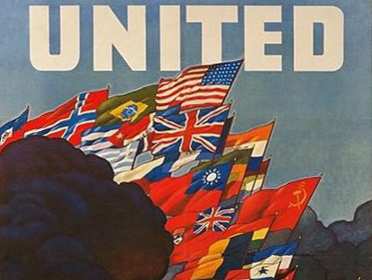What Countries Were Involved in World War 2

Table of Contents
- Allies Vs Axis Powers
- Countries that Joined the Allies
- States that Allied Themselves with the Axis Powers
- Neutral Countries
Quick Facts
Countries involved in World War 2 joined either the Allies or the Axis Powers.
The Allies from World War 1 – Britain, France, Russia and the United States once again formed the core of the anti-German coalition.
The Nazi Germany was joined by Italy and Japan that fought on the side of the Allies in World War 1.
Very few countries remained neutral during the entire World War 2.
Allies Vs Axis Powers
World War 2 involved most of the world’s nations which fought for either of two military alliances – the Axis Powers and the Allies. The key members of the Allies of World War 1 – France, Britain, Russia and the United States once again fought against Germany but they also had to fight against their former allies of Italy and Japan which joined the Nazi Germany. Just like World War 1, World War 2 started in Europe with the German invasion of Poland on September 1, 1939, which is traditionally viewed as the beginning of war.
Countries that Joined the Allies
Most world’s countries joined the Allies although some of them were controlled by pro-Axis regimes. The original anti-German military alliance consisting of Poland, France and Britain was eventually joined by the following countries (by alphabetical order): Aden Protectorate (former South Yemen), Albania, Argentina, Australia, Belgium, Bolivia, Brazil, British Malaya (today’s Malaysia and Singapore), British Raj (today’s India, Bangladesh, Burma and Pakistan), Canada, Chile, China, Colombia, Costa Rica, Cuba, Cyprus, Czechoslovakia, Denmark, Dominican Republic, Dutch East Indies (present-day Indonesia and New Guinea), Ecuador, El Salvador, French Indochina (today’s Cambodia, Laos and Vietnam), French Guiana, Greece, Guatemala, Guyana, Haiti, Honduras, Iran, Iraq, Luxembourg, Malta, Mexico, Mongolia, the Netherlands, Newfoundland, New Zealand, Nicaragua, Norway, Palestine, Panama, Peru, Philippines, Saudi Arabia, Soviet Union, Syria, Trucial States (today’s United Arab Emirates), Turkey, the United States, Uruguay, Venezuela and Yugoslavia.
The Allied coalition also included all African countries except for Italian colonies of Somalia, Ethiopia and Italian North Africa (present-day Libya), and Spanish and Portuguese colonies of Mozambique, Angola, Spanish Sahara (present-day Western Sahara) and Portuguese Guinea (today’s Guinea-Bissau) which were neutral like their colonial rulers. Countries such as Italy which later left the Axis powers and joined the Allies are not considered Allied states.
States that Allied Themselves with the Axis Powers
The Axis powers were officially founded by the Tripartite Pact signed between the Nazi Germany, Italy and Japan on September 27, 1940. Countries that allied themselves with the Axis powers include: Bulgaria, Finland, Hungary, Romania, Vichy France, Thailand, Formosa (present-day Taiwan) and Manchuria. The Axis powers created a number of puppet states in occupied areas but they usually are not considered Axis states although some of them actively collaborated with the Axis such as the newly established Independent State of Croatia and the Slovak Republic. However, both of them ceased to exist after the end of World War 2 and were rejoined with Czechoslovakia and Yugoslavia, respectively, both of which were Allied states.
Neutral Countries
Few countries remained neutral during the entire World War 2: Switzerland, Sweden, Spain, Portugal, Iceland, Ireland, Afghanistan, North Yemen, Oman, Nepal, Tibet, and the above mentioned Spanish and Portuguese colonies in Africa.




